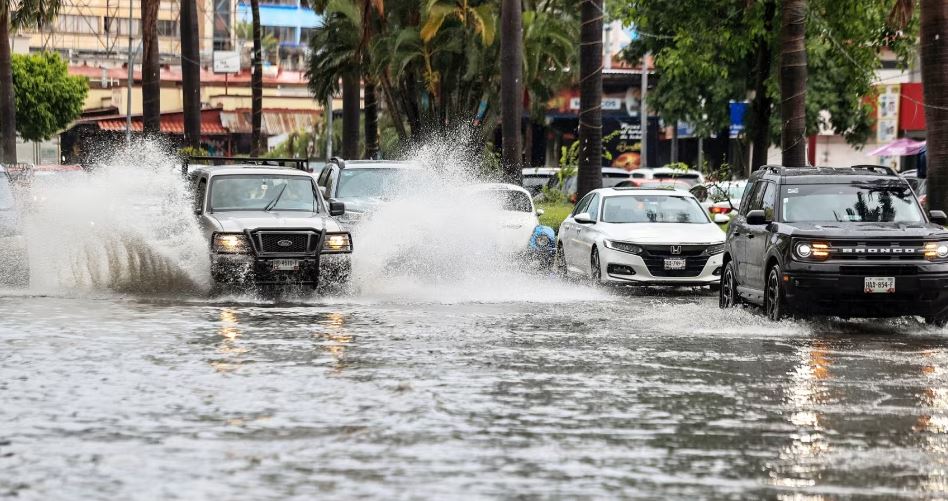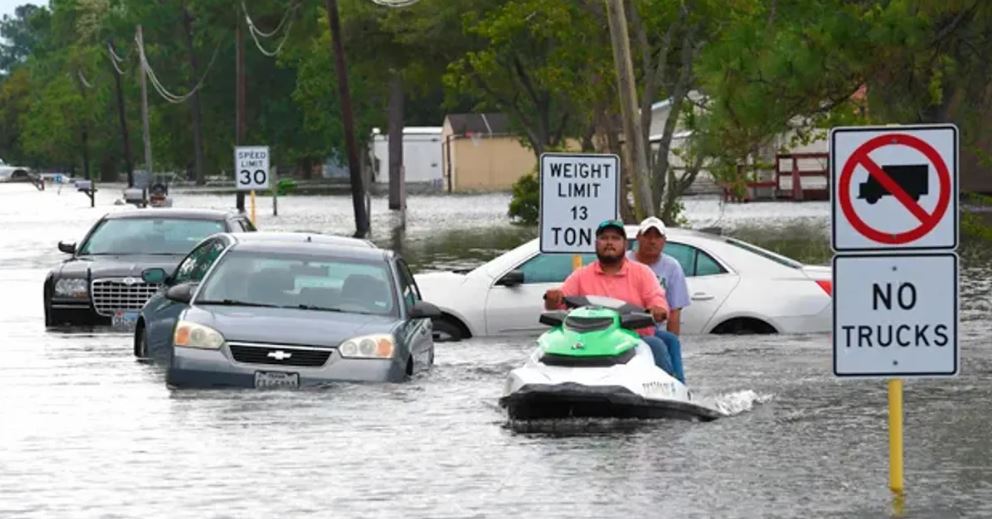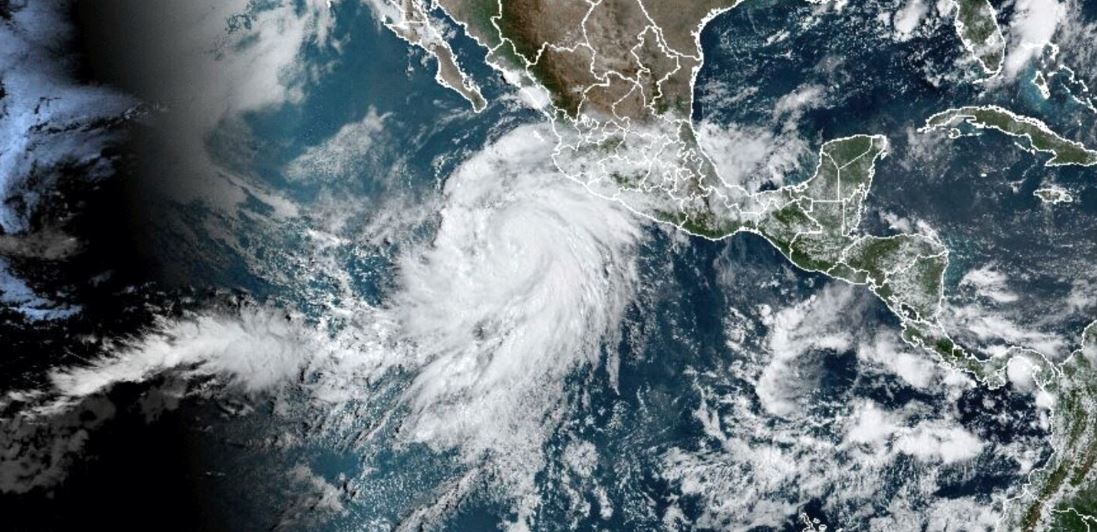Hurricane Hilary, now a Category 4 storm, causes massive flooding in Baja California, as it’s now reportedly headed for Southern California.
In August 2023, it was reported Hurricane Hilary would be hitting the United States.
The hurricane, currently a Category 4, and expected to weaken, is set to occur only on the West Coast, specifically in the Southern California and Nevada areas.
The National Hurricane Center predicts the Baja California Peninsula and Southern California will see rainfall up to 10 inches.
But what is Hurricane Hilary; when did it start and where exactly is it hitting in 2023? Read on for more including cities which mostly suffer this disaster.

What is Hurricane Hilary?
Hurricane Hilary is a natural disaster that is expected to cause “catastrophic and life-threatening” floods in countries, cities, towns it hits.
Heavy storm becomes a hurricane.
Hurricanes are tropical cyclones, which are classified as tropical storms when their sustained winds reach 39 to 73 mph (63 to 118 km/h) and are given a name from a list provided by the World Meteorological Organization.
Here are the sustained winds connected to storms in categories 1 through 5 on the Saffir-Simpson scale, per LiveScience:
- Category 1: 74 to 95 mph (119 to 153 km/h)
- Category 2: 96 to 110 mph (154 to 177 km/h)
- Category 3: 111 to 129 mph (178 to 208 km/h)
- Category 4: 130 to 156 mph (209 to 251 km/h)
- Category 5: 157 mph or higher (252 km/h or higher)

Where is Hurricane Hilary going to hit?
In August 2023, it was reported Hurricane Hilary would be hitting the United States.
The hurricane, initially a Category 4, was set to occur only on the West Coast, specifically in the Southern California and Nevada areas.
Samantha Connolly, a National Weather Service meteorologist said on August 17, 2023, in a forecast: “The combination of heavy rainfall, the potential for flash flooding, and strong winds could very well make this a high-impact event for Southern California.”
The tropical storm made landfall Sunday on the Baja California peninsula of Mexico, with “catastrophic and life-threatening flooding” expected in the region, including across parts of the southwestern US, according to the National Hurricane Center (NCH).
A person drowned on Saturday in the Mexican town of Santa Rosalia, after a vehicle was swept away in a severe flood.
Hurricane Hilary is expected to be the first tropical storm in 84 years to hit landfall in California.
According to the NCH, the potentially historic amount of rainfall will continue to sweep through the southwestern US and is expected to cause flash, urban, and arroyo flooding including landslides, mudslides, and debris flow through early Monday morning.
Parts of Oregon and Idaho could get 1 to 3 inches of rain with up to 5 inches in some places through Tuesday.
Localized flooding impacts are also expected across northern portions of the Intermountain West.
Tropical storm conditions are expected in parts of the southwestern US within the Tropical Storm Warning area throughout tonight.
Experts have also warned that winds could be particularly strong in and around areas of higher terrain, with gusty winds expected to spread well inland across the western US.
Large swells generated by Hilary are set to affect portions of the Baja California Peninsula and southern California through early Monday and are likely to cause “life-threatening surf and rip current conditions”.
In Nevada, officials remain concerned about dangerous flooding across the western Mojave Desert, which is at high risk for flash flooding, “an exceedingly rare occurrence,” NWS Las Vegas said on Sunday.
In 2022, Tropical Storm Kay occurred bringing flooding and heavy rain but didn’t make landfall.
When did Hurricane Hilary start?
On Thursday, August 17, in the afternoon maximum sustained winds of 105mph began to occur off of Mexico’s Pacific coast.
Starting Friday, August 18, Southern California and Nevada started to see heavy rain and potential flooding.
But Hilary was at its peak at the beginning of Sunday, August 20, and is set to continue into Monday, August 21.
The NHC says: “Intense heavy rainfall associated with Hilary is expected across the Southwestern United States through early Monday morning.
“Rainfall amounts of 3 to 6 inches, with isolated maximum amounts of 10 inches, are expected across portions of southern California and southern Nevada, leading to dangerous to catastrophic flooding.”
According to the hurricane center, here’s how much rainfall these areas can potentially see:
- Valleys: 1.5-2.5inches
- Coast: 1-1.5inches
- San Bernardino County Mountains: 3-5inches
- Lower Deserts: 5-7inches
- San Diego County Mountains: 4-8inches
- Mojave Desert: 2.5-4inches

What category is Hurricane Hilary?
As of August 21, 2023, Hurricane Hilary has been downgraded from a Category 4 rating to a Category 1.
According to the NCH, a Category 1 hurricane will see “very dangerous winds produce some damage”.
“Well-constructed frame homes could have damage to roofs, shingles, vinyl siding, and gutters,” they explained.
“Large branches of trees will snap and shallowly rooted trees may be toppled. Extensive damage to power lines and poles likely will result in power outages that could last a few to several days”.
The storm is expected to weaken further and make landfall in Southern California as a tropical storm.
The Federal Emergency Management Agency has pre-positioned staff and supplies in Southern California, President Joe Biden told reporters at Camp David.
In a statement by the hurricane center on Hilary, experts say it is “likely to become a major hurricane.”
It’s thought the storm will be a major hurricane while off the coast of Mexico, before weakening as it crosses over land.

10 Cities most frequently affected by hurricanes
Here are the top 10 cities that hurricanes have impacted or had an impact on most frequently since records have been kept in 1871, according to HurricaneCity, a hurricane-tracking website:
- Cape Hatteras, North Carolina: Every 1.30 years (115 named tropical storms since 1871)
- Morehead City, North Carolina: Every 1.49 years (99 named storms)
- Grand Bahamas Island, Bahamas: Every 1.61 years (93 named storms)
- Wilmington, North Carolina: Every 1.67 years (90 named storms)
- Cayman Islands (most affected area in the Caribbean Sea): Every 1.69 years (89 named storms)
- Great Abaco Island, Bahamas: Every 1.76 years (85 named storms)
- Bermuda: Every 1.79 years (84 named storms)
- Andros Island, Bahamas: Every 1.85 years (81 named storms)
- Savannah, Georgia: Every 1.90 years (79 named storms)
- Sable Island, Nova Scotia: Every 1.90 years (79 named storms)
What you need to have when living in areas mostly affected by Hurricane
People who live in hurricane-prone areas should also have an emergency supply kit, ideally spread out across their homes.
According to Ready.gov, a fundamental emergency pack should contain:
- A gallon of water per person per day for at least three days
- A three-day supply of non-perishable food
- A battery-powered or hand-crank radio
- A flashlight with extra batteries
- A first aid kit
- A whistle to get help
- Dust mask
- Moist towelettes, garbage cans and plastic ties for sanitation
- A wrench or pliers for turning off busted pipes
- Maps
- A can opener for food
- And cellphone chargers
